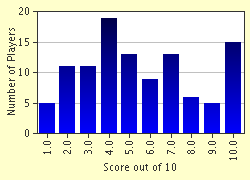Quiz Answer Key and Fun Facts
1. Which of the following birds builds a nest that is a metre across and two metres high?
2. What is the African jacana (Actophilornis africanus) also known as?
3. Which of the following bee-eaters hitches a ride on a kori bustard's (Ardeotis kori) back, using it as a moving perch to hunt insects?
4. Which of the following kingfishers is of a black and white colour?
5. All hornbills nest in tree holes in which the female bird seals herself and stays there during the entire incubation period.
6. Which of the following storks has an air sac dangling from its neck?
7. What is an obvious difference between the greater flamingo (Phoenicopterus ruber) and the lesser flamingo (Phoenicopterus minor), besides the size?
8. Which of the following louries is also called the "go-away bird"?
9. Which of the following eagles has a white head and tail and mostly eats fish?
10. The sociable weaver (Philetairus socius) is known for building a large nest which can support a population of up to 300 individuals.
Source: Author
Warzycha
This quiz was reviewed by FunTrivia editor
crisw before going online.
Any errors found in FunTrivia content are routinely corrected through our feedback system.

